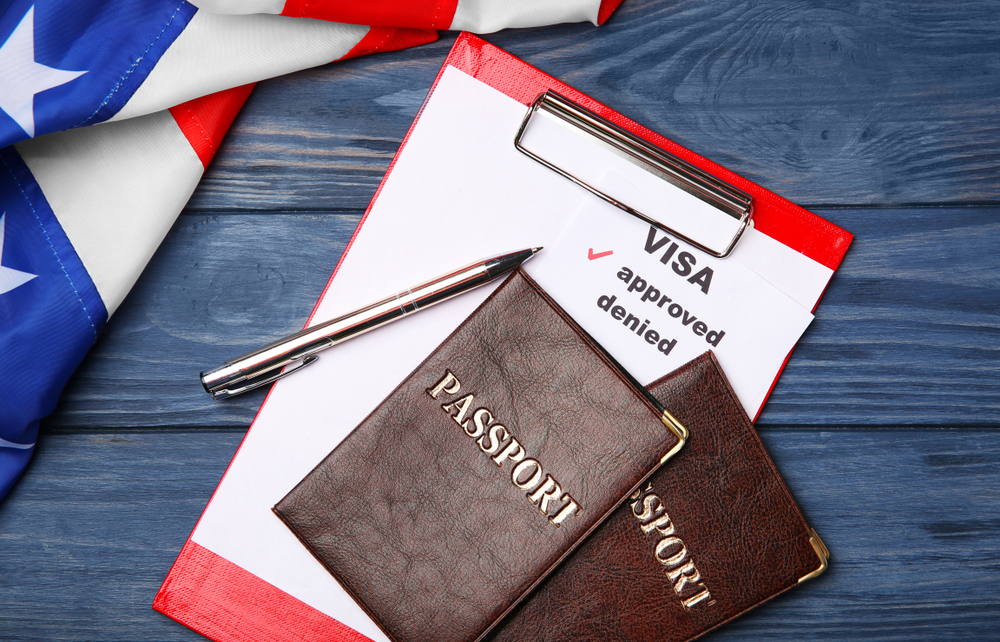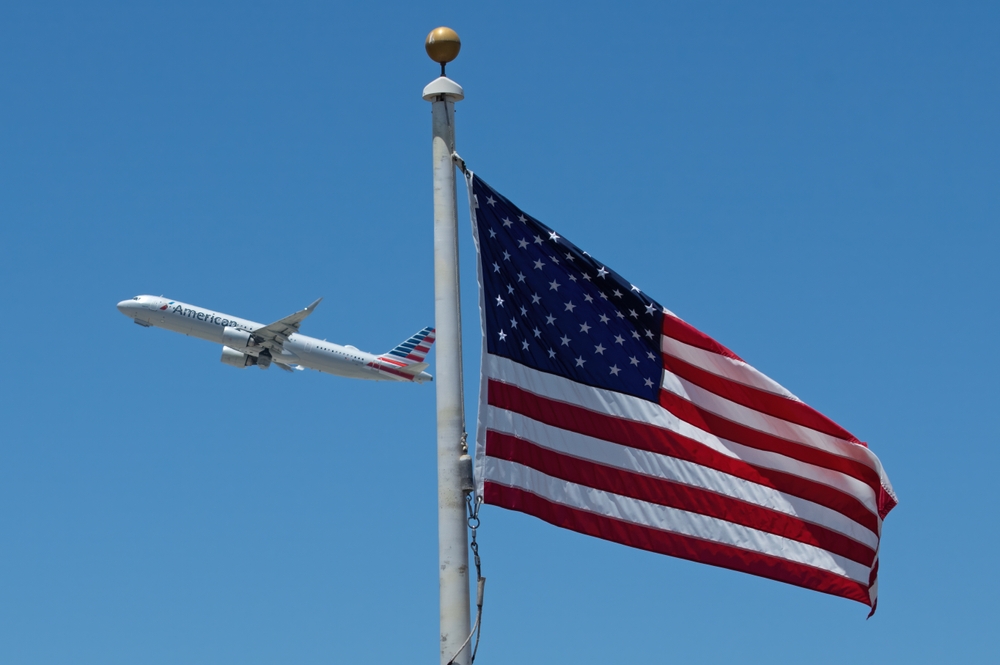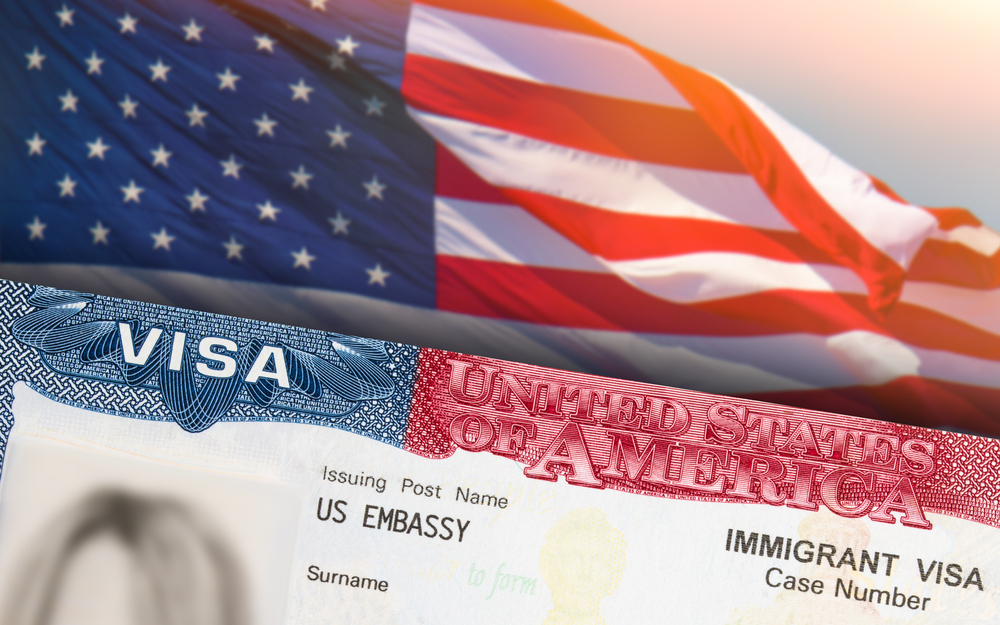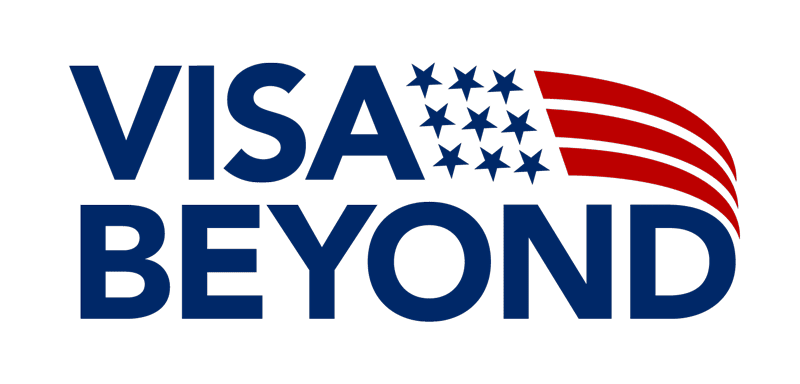EB1 visa applicants are recognized as priority workers, individuals with exceptional ability and international acclaim who qualify for a direct path to U.S. lawful permanent residency. By contrast, the O1 visa is a non-immigrant option designed for foreign nationals with outstanding achievement in science, business, athletics, or the performing arts, but it does not immediately lead to a Green Card. Choosing between these two visas depends on your long-term goals, career stage, and the eligibility criteria you can meet.
This is where VisaBeyond makes the difference. As a trusted immigration partner, VisaBeyond offers end-to-end support for both O1 and EB1 applicants. Our services include evaluating your academic field and field of endeavor, preparing extensive documentation, securing job offer letters or guiding self-petition cases, and handling either adjustment of status or consular processing. We work closely with professionals in higher education, executives in legal entities, and artists with contributions of major significance, ensuring that every petition reflects the applicant’s level of expertise and scholarly research contributions.
With VisaBeyond’s guidance, talented individuals can choose the right visa strategy, avoid unnecessary delays, and maximize their chances of success—whether starting with an O1 visa or pursuing the EB1 visa directly.

EB1 Visa vs. O1 Visa at a Glance
| Feature | O1 Visa | EB1 Visa |
|---|---|---|
| Visa Type | Non-immigrant, temporary | Immigrant, leads directly to permanent residency (Green Card) |
| Primary Goal | Temporary work in the U.S. | Permanent residency and Green Card |
| Job Offer Required? | Yes, from a U.S. employer or agent | Not for EB1A (self-petition possible) |
| Initial Validity | 3 years, renewable annually | Direct Green Card, valid for 10 years (renewable) |
| Processing Time | Fast (weeks to months) | Fast (no backlog for most applicants) |
| Subcategories | O1A (Science, Business, Education, Athletics) / O1B (Arts, Film, Television) | EB1A (Extraordinary Ability) / EB1B (Outstanding Professors & Researchers) / EB1C (Multinational Executives & Managers) |
| Dependents | O3 visa for spouse and unmarried children under 21 (no work rights) | Green Card for spouse and children under 21 with work & study rights |

What Is the O1 Visa?
The O1 visa is a U.S. non-immigrant visa designed for foreign nationals with extraordinary ability in the sciences, business, education, athletics, or the performing arts. It recognizes individuals who are at the top of their field and allows them to live and work temporarily in the United States while contributing their skills and achievements to the American economy and cultural landscape.
Unlike many employment-based visas that require the lengthy PERM labor certification process, the O1 visa offers a faster route. It typically requires a job offer letter or sponsorship from a U.S. employer or qualified agent. The visa is initially valid for three years and can be extended in one-year increments as long as the individual continues their work of others or projects in their field of endeavor.
There are two main categories of the O1 visa:
- O1A: For individuals with exceptional ability in the fields of science, education, business, or athletics. Applicants often present scholarly articles, patents, or contributions of major significance in their academic field or industry.
- O1B: For individuals in the performing arts, film, or television. Evidence may include leading roles, media recognition, critical reviews, or international awards.
One of the major advantages of the O1 visa is its flexibility. Unlike the EB1 visa, it does not directly grant lawful permanent residency, but it serves as a strategic entry point. Many professionals use the O1 to establish a career in the U.S., strengthen their portfolio with extensive documentation, and later transition to an immigrant visa category, such as the EB1.
In short, the O1 visa provides talented professionals with the opportunity to showcase the
Two Types of O1 Visa:
- O1A Visa: For science, education, business, and athletics professionals.
- O1B Visa: For individuals with exceptional talent in the arts, film, and television.
Key Benefits of the O1 Visa:
- No annual cap (unlike H1B).
- Fast processing and flexible renewals (issued for 3 years, renewable in 1-year increments).
- Family members can join under O3 visa status.
Requirements for O1 Visa:
- A U.S. job offer or agent sponsorship.
- Proof of extraordinary ability (awards, publications, memberships, critical roles, or high salary).
The O1 visa is an excellent entry point for professionals who want to build their U.S. career and later transition to permanent residency.

What Is the EB1 Visa?
The EB1 visa is an employment-based immigrant visa category reserved for priority workers—foreign nationals who have achieved outstanding achievement and are recognized at the top of their field. Unlike temporary non-immigrant options such as the O1 visa, the EB1 visa leads directly to a green card application and lawful permanent residency in the United States.
There are three main preference categories within the EB1 visa:
EB1A – Alien of Extraordinary Ability
This subcategory is for individuals with international acclaim in sciences, business, education, athletics, or the arts. Applicants must present extensive documentation, such as scholarly articles, media coverage, or contributions of major significance in their field of endeavor. No employer sponsorship or offer of employment is required, making it the most flexible option.EB1B – Outstanding Professors and Researchers
Designed for those in higher education or research, this option requires a job offer letter from a U.S. institution of higher education or research center. Applicants must provide proof of scholarly research contributions, publications, and recognition in their academic field.EB1C – Multinational Managers and Executives
For individuals holding an executive position in a legal entity abroad who are transferring to a related U.S. company. Employer sponsorship is required, along with proof of managerial responsibilities and several years of experience.
A key benefit of the EB1 visa is the lack of a PERM labor certification process, which is normally required for other employment-based green cards for skilled workers or those with an advanced degree. Because EB1 applicants are priority workers, their priority date in the visa bulletin is typically current, significantly shortening wait times.
In summary, the EB1 visa pro
EB1 Subcategories:
- EB1A (Extraordinary Ability): For top professionals recognized nationally or internationally. No job offer is required.
- EB1B (Outstanding Professors and Researchers): For academics with global recognition and at least 3 years of research/teaching experience. Requires a job offer from a U.S. university or institution.
- EB1C (Multinational Executives and Managers): For senior managers transferring from multinational companies to U.S. branches.
Key Benefits of the EB1 Visa:
- Direct Green Card for you and your family.
- No labor certification (PERM) required.
- Short processing time, often without backlog.
Requirements for EB1 Visa:
- Evidence of extraordinary achievements (awards, publications, memberships, critical roles, media coverage, or exceptional salary).
- In EB1B and EB1C categories, a qualifying job offer is required.

Should You Choose the O1 Visa or the EB1 Visa?
Choose the O1 Visa if:
- You need a fast, temporary entry into the U.S. (for a project or 3-year employment).
- You want to build your U.S. portfolio before applying for permanent residency.
- Your achievements are strong but not yet at the EB1 visa level.
Choose the EB1 Visa if:
- Your main goal is a Green Card and permanent residency.
- You already have strong, internationally recognized achievements.
- You qualify as a top researcher, professor, or executive.
- You don’t want to deal with temporary renewals and uncertainty.
Strategic Path: From O1 Visa to EB1 Visa
For many foreign nationals, the O1 visa serves as a valuable first step toward achieving the EB1 visa and ultimately securing lawful permanent residency. Since the O1 is a non-immigrant visa, it allows talented professionals in the sciences, business, athletics, or the performing arts to enter the U.S. quickly and begin building their careers without navigating the PERM labor certification process.
During their stay on the O1, applicants can strengthen their profiles by publishing scholarly articles, demonstrating contributions of major significance, and receiving recognition for the work of others in their respective fields. This extensive documentation becomes critical when applying for the EB1 visa, where USCIS adjudicating officers carefully evaluate eligibility criteria and the applicant’s level of expertise.
The strategic path works as follows:
- Enter the U.S. with the O1 visa and begin establishing a professional presence.
- Collect evidence of international acclaim, media coverage, awards, or scholarly research contributions.
- Transition to the EB1A (Alien of Extraordinary Ability) or other EB1 categories once sufficient achievements are documented.
By leveraging the entire process strategically, professionals can transform temporary opportunities under the O1 into a permanent future through the EB1 visa, ensuring long-term stability for themselves and their families.
Professional Support for EB1 and O1 Applicants
Choosing between the O1 visa and the EB1 visa requires expert evaluation of your profile, long-term goals, and eligibility. At [Your Immigration Firm], we help clients:
- Assess eligibility for EB1 vs. O1 visas.
- Prepare strong documentation and petition letters.
- Navigate interview preparation and application timelines.
- Plan a strategic path from temporary to permanent residency.
Frequently Asked Questions
1. Can I apply for both the O1 visa and EB1 visa?
Yes. Many applicants first enter with an O1 visa and later apply for the EB1 visa after strengthening their U.S. achievements.
2. What’s the biggest difference between O1 visa and EB1 visa?
The O1 visa is temporary and non-immigrant, while the EB1 visa is permanent and leads directly to a Green Card.
3. Do I need a job offer for both visas?
For the O1 visa, yes. For EB1A, no job offer is required—you can self-petition.
4. Can my family work in the U.S. under these visas?
Under O1 visa, dependents (O3) cannot work. Under EB1 visa, dependents get Green Cards and full work/study rights.
5. Are there age limits for EB1 or O1 visas?
No. Both visas are based on achievements, not age.
EB1 Visa: A Comprehensive Guide for Foreign Nationals
Understanding the EB1 Visa for Foreign Nationals
The EB1 visa is one of the most sought-after immigrant visa classifications in the United States. It is designed for foreign nationals who are recognized at the top of their field and demonstrate exceptional ability in the sciences, arts, education, business, or athletics. Unlike other preference categories that require the PERM labor certification process, the EB1 visa streamlines the entire process toward lawful permanent residency.
Applicants are considered priority workers, meaning their priority date is usually current in the visa bulletin published by the Department of State. This results in shorter wait times compared to skilled workers or other employment-based applicants.
EB1 Visa Eligibility Criteria and Preference Categories
The EB1 visa has three preference categories:
- EB1A – Aliens of extraordinary ability with sustained international acclaim, contributions of major significance, and evidence such as scholarly articles, awards, or recognition in their respective fields.
- EB1B – Outstanding achievement by professors and researchers who demonstrate scholarly research contributions and scholarly articles published in reputable journals within their academic field.
- EB1C – Multinational managers or executives transferring to a U.S. company to hold an executive position within the same legal entity.
Applicants may use comparable evidence when traditional documentation does not exist, and they must meet strict eligibility criteria to succeed.

Evidence of Contributions of Major Significance
USCIS requires extensive documentation that demonstrates the applicant’s level of expertise and the contributions of major significance in their field of endeavor. Examples include recognition from peers for the work of others, citations of scholarly articles, or major awards such as a Nobel Prize.
The Role of Employer Sponsorship and Job Offer Letters
While EB1A applicants may self-petition without an offer of employment, EB1B and EB1C categories require employer sponsorship. Typically, an institution of higher education or U.S. company provides a job offer letter confirming the applicant’s permanent role.
This requirement distinguishes the EB1 visa from categories that demand the PERM labor certification, which applies to most skilled workers and professionals with an advanced degree.
Adjustment of Status vs. Consular Processing
Foreign nationals already in the United States can pursue adjustment of status through a green card application, while applicants abroad must use consular processing. Both paths result in permanent residents status for the applicant and eligible family members.
Premium Processing and Timelines for EB1 Visa Applicants
USCIS offers premium processing, which expedites adjudication to 15 calendar days. This service is especially valuable for applicants facing time-sensitive opportunities in the performing arts, fields of science, or higher business sectors.
Adjudicating officers may still request additional evidence, but premium processing ensures that applicants receive updates faster than standard applications.
The Importance of Years of Experience and Academic Research
Applicants with significant years of experience and scholarly research contributions in higher education or their academic field have a stronger chance of approval. This includes researchers recognized for scholarly articles, citations, or their influence on the work of others in their respective fields.
National Interest Waiver vs. EB1 Visa
Although the national interest waiver is available under EB2 for individuals with exceptional ability, the EB1 visa remains the stronger pathway for those at the top of their field. Unlike EB2 NIW, which still requires navigating through immigration attorneys and longer processing via the perm labor certification, the EB1 visa skips these delays.
For an alien worker seeking green card holder status, the EB1 visa provides direct access to lawful permanent residency, often faster than any other immigrant visa classification.
Final Thought: Choosing Between O1 and EB1 with VisaBeyond
Deciding between the O1 visa and the EB1 visa is more than just selecting an immigration category—it is about aligning your long-term goals with the right strategy. While the O1 provides quick access to the U.S. for professionals in performing arts, fields of science, business, or athletics, the EB1 remains the ultimate route to lawful permanent residency. Both require extensive documentation, careful planning, and an understanding of eligibility criteria, which can be overwhelming for many applicants.
This is where VisaBeyond plays a critical role. As experienced immigration attorneys and consultants, VisaBeyond evaluates your academic field, achievements, and level of expertise to determine whether you should begin with an O1 visa or apply directly for the EB1. Their team guides you through the entire process—from preparing job offer letters and employer sponsorship documents to drafting persuasive petition letters supported by comparable evidence, scholarly articles, and proof of contributions of major significance.
With VisaBeyond’s expertise, you gain a strategic roadmap that minimizes delays, ensures compliance with Department of State requirements, and maximizes your chances of approval. Whether your dream is short-term opportunities in the U.S. or a direct path to a green card application, VisaBeyond helps transform your extraordinary achievements into immigration success.



